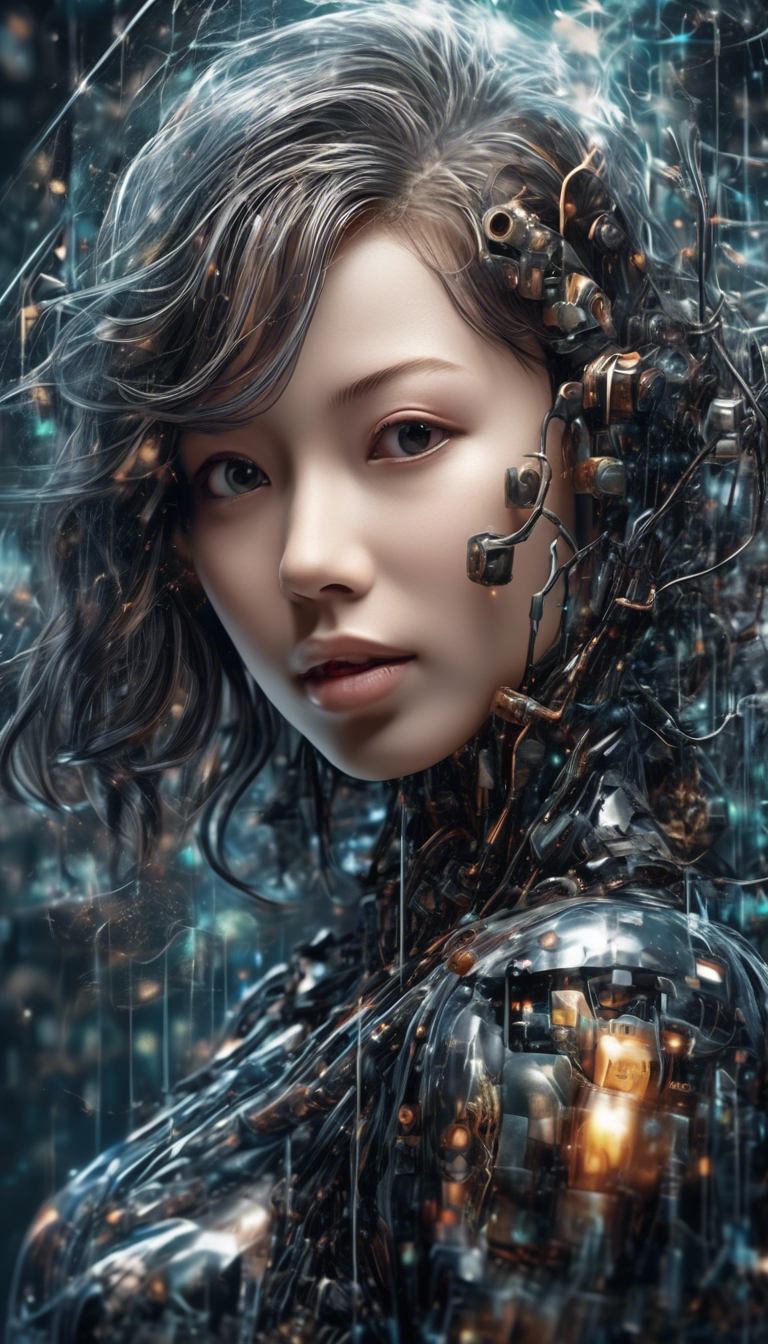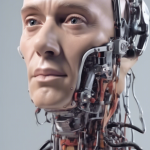Exploring the Potential of AI Image Creation with Photographic Elements
The intersection of artificial intelligence and photography has opened up an exciting frontier in the realm of digital imagery. With the advent of AI image creation combined with photographic elements, artists, marketers, and everyday users are harnessing cutting-edge technology to push the boundaries of creativity. In this exploration, we will delve into how AI can enhance photographic images, augment the creative process, and transform our understanding of visual media.
The Role of AI in Image Creation
Artificial intelligence tools have revolutionized traditional image creation methods, allowing for unprecedented manipulation and generation of visuals. Unlike conventional software processes that rely heavily on human input, AI can analyze vast datasets of existing images to create new, unique artworks. This capability extends significantly to photographs, producing results that blend reality with imaginative elements.
Benefits of Using AI in Photography
- Enhanced Creativity: AI tools can suggest new concepts by analyzing existing images, helping photographers break creative blocks.
- Time Efficiency: These technologies automate labor-intensive tasks like background removal or color correction, allowing photographers to focus more on the creative aspects.
- Cost-Effectiveness: By reducing the need for extensive professional intervention, AI can cut down production costs for marketing campaigns or personal projects.
- Personalization: AI can generate tailored images based on consumer preferences, ensuring that the visual content resonates with targeted audiences.
How AI Enhances Photographic Elements
The beauty of AI image creation with photographic elements lies in its ability to seamlessly blend reality with imagination. Here’s how:
Integration of Styles
One remarkable feature of AI is its capability to apply different artistic styles to photographs. By leveraging neural networks, AI can transform a standard photo into something resembling a famous painting or other artistic styles, enriching the overall aesthetic appeal. This style transfer can be particularly beneficial for creatives in branding and advertising, where striking visuals are crucial.
Photo Restoration
AI image creation also plays an indispensable role in restoring old photographs. Advanced algorithms can reconstruct damaged features in an image, correct colors, and enhance details that would otherwise be lost. This restoration ability breathes new life into treasured memories, making it possible to revisit the past with clarity and nostalgia.
Real-World Applications of AI Image Creation
The versatility of AI in image creation goes beyond theoretical frameworks; it has practical applications across various industries:
- Marketing: Brands can utilize AI-generated images to create eye-catching campaigns that captivate potential customers.
- Entertainment: Filmmakers and video game developers use AI to create detailed environments and rich character designs.
- Art: Artists have begun to incorporate AI tools into their workflows, exploring new dimensions of creativity.
- Social Media: Users can enhance their online presence by producing unique images that stand out from the crowd.
Challenges and Considerations
While the benefits of AI image creation are significant, several challenges exist. Ethical concerns around copyright infringement and ownership pose an ongoing debate. As AI generates content, understanding who retains rights and how these works can be used must be addressed. Additionally, the potential for misuse in creating misleading or fake images raises concerns about authenticity and trust in digital media.
Looking Ahead
The future of AI image creation paired with photographic elements is bright and holds countless possibilities. As technology continues to improve, we may witness enhanced levels of realism, context-aware manipulation, and even AI systems that learn from user preferences to create bespoke imagery. This progress will undoubtedly redefine the landscape of visual storytelling and creativity.
In a world where visual content is more critical than ever, embracing the synergy between AI and photography is essential. By exploring the vast potential of AI image creation, we can empower a new generation of creatives to express their ideas in ways previously unimaginable. Whether utilized for professional endeavors or personal exploration, the fusion of AI with photographic elements promises to be a transformative journey.
The Impact of AI-Generated Images on Modern Photography Practices
The emergence of AI-generated images has significantly changed modern photography practices, offering a new realm of possibilities for both professional and aspiring photographers. The combination of machine learning algorithms and vast datasets has led to captivating visuals that were once considered unattainable. This intermingling of technology and artistry is reshaping how we perceive, create, and interact with photographic content.
Transforming Creative Processes
Traditional photography often involves extensive planning, from scouting locations to manipulating light conditions. With AI-generated images, however, the creative process is becoming more fluid and accessible. Photographers can now:
- Explore Concepts: AI tools allow photographers to experiment with various styles and aesthetics without requiring extensive resources. They can generate multiple versions of an idea in seconds.
- Save Time: Instead of spending hours on staging a shot, photographers can leverage AI to produce composite images that reflect their vision, thereby streamlining workflows.
- Foster Collaboration: AI can serve as a collaborative partner, enhancing the artistic process by suggesting innovative interpretations of common subjects.
AI tools can conjure vibrant landscapes, fantastical creatures, or surreal portraits, enabling creatives to push the boundaries of their imagination. Such innovations often inspire photographers to explore new genres or techniques, enriching the overall photography landscape.
Revolutionizing Access to Photography
The accessibility of high-quality photography has been a game-changer. AI-generated images offer unique opportunities for individuals who may not have the skills or resources to create traditional photographs. This democratization of visual content allows anyone to harness creative potential, irrespective of their technical expertise.
Consider the following points:
- Cost-Efficient Solutions: AI-generated imagery reduces the need for expensive equipment and studio setups. This means aspiring photographers can produce stunning visuals without breaking the bank.
- Instant Gratification: Users can quickly generate images based on their commands, satisfying their creative impulses in real-time. This immediacy appeals to today’s fast-paced digital audience.
- Education and Learning: For novice photographers, observing AI-generated images can offer insights into composition, color theory, and innovative styles, assisting them in honing their craft.
As more individuals gain access to AI-generated imagery, the art of photography is being transformed. Novices and experts alike are embracing these tools to expand their portfolios, leading to a rich diversity in visual storytelling.
Ethical Considerations and Authenticity
With these advancements come ethical challenges. As AI-generated imagery becomes more prevalent, questions regarding authenticity arise. How much of a photograph must be human-created to be considered "real"? Photographers who rely heavily on AI tools may face scrutiny from purists who value the artistry of traditional methods.
Furthermore, the use of AI in photography can lead to:
- Copyright Issues: Conflicts can arise regarding ownership of AI-generated visuals, particularly if the underlying models were trained on copyrighted materials.
- Misrepresentation: Misleading or manipulated images can pose risks, particularly in journalism or documentary photography, where authenticity is paramount.
- Impact on Employment: The potential decline in demand for traditional photography services may push professionals to adapt, sparking conversations about the future role of human photographers.
Although these challenges are significant, they also prompt critical discussions about the nature of creativity and the value we assign to art.
—A Blended Future
In the rich tapestry of photography’s evolution, AI-generated images represent both a challenge and an opportunity. By blending traditional techniques with cutting-edge technology, photographers can explore a new realm of creative expression. As these tools continue to evolve, photographers must navigate their ethical implications while also embracing the transformative potential of AI.
Ultimately, the integration of AI into photography practices heralds a dynamic era where creativity knows no bounds. Photographers who remain adaptable and innovative in their use of these technologies will flourish, finding new ways to communicate their vision while also celebrating the art form’s timeless nature. As we step further into this new world, the art of capturing human experience will undoubtedly become more diverse, inclusive, and breathtaking.
Conclusion
The evolution of AI image creation has opened up a universe of possibilities, especially when intertwined with traditional photographic elements. We see an exciting blend where creativity meets technology, leading to innovative visual storytelling. AI-generated images are no longer just tools; they have become collaborators in the art of photography. As photographers explore the potential of AI, they can elevate their work, presenting new ways to depict reality and imagination.
One of the most profound impacts AI has had on modern photography practices is the ability to enhance and manipulate images seamlessly. Imagine capturing a stunning photograph of a landscape and then using AI to infuse it with elements that enrich the storytelling. You can introduce a vibrant sunset, the whimsical flight of a butterfly, or even abstract patterns that reflect a mood. This capability not only allows photographers to reimagine their work but also pushes the boundaries of what’s possible in visual art.
AI image creation offers an essential advantage: efficiency. In a fast-paced digital world, the demand for content can seem insatiable. Traditional methods of editing and refining images can be labor-intensive, taking valuable time that photographers could spend on creative pursuits. With AI, tasks like retouching, color correction, or even generating backgrounds can be accomplished with remarkable speed. It creates a space where photographers can focus more on the conceptual aspects of their work, diving deep into creativity without being bogged down by the technicalities.
Moreover, the implementation of AI in photography democratizes access to high-quality image creation. You no longer need a professional-grade camera or extensive post-processing skills to create stunning visuals. Even amateur photographers or hobbyists can harness AI tools to generate images that resonate with their personal style. This inclusivity enriches the photographic community, as diverse perspectives and visions emerge, shaping the future of visual art in ways that reflect a broader spectrum of experiences and narratives.
AI-generated images are also reshaping the artistic landscape by challenging our perceptions of authenticity. While traditional photographs are often seen as unaltered captures of reality, AI introduces a complex dialogue about what constitutes a true image. Should we regard AI-generated visuals as pure art or mere simulations? As photographers grapple with these questions, they embark on a journey that examines the essence of art, craft, and technology. This ongoing discourse fosters a richer appreciation for both AI and traditional photography, creating a hybrid space for innovation, exploration, and expression.
The intersection of AI image creation and photography also inspires new forms of collaboration. Photographers can partner with AI systems to brainstorm creative concepts or assess body of work. The data-driven approach of AI can offer insights that help photographers refine their styles or explore unexplored genres. Perhaps they might discover a flair for abstract imagery they never knew they possessed. Such partnerships showcase the potential for synergy between human creativity and machine intelligence, laying the groundwork for future advancements in visual art.
In understanding the ramifications of AI image creation, there’s also a responsibility that comes with it. As this technology rapidly evolves, photography professionals must ethically consider how they integrate AI-generated images into their work. Issues surrounding copyright, authenticity, and the portrayal of reality cannot be overlooked. Engaging critically with these dilemmas ensures that photographers maintain their integrity and authenticity while embracing technological advancements.
Navigating this new landscape means also catering to evolving audience expectations. Viewers who are accustomed to dynamic, high-quality imagery seek out originality and depth in visual content. Photographers can leverage AI to not just meet these expectations, but to exceed them—turning ordinary images into extraordinary reflections of the world. This adaptation may require photographers to rethink their artistic approaches and marketing strategies to resonate with contemporary audiences.
The synthesis of AI and photography marks a pivotal shift in how we create and perceive images. By embracing this technology, photographers can not only expand their tools but also redefine their artistic practice. As AI image creation continues to evolve, it will undoubtedly leave a significant mark on the photography industry and influence cultural narratives for years to come. The journey into this innovative realm of AI-generated images combines both exploration and creativity, paving the way for a future rich with possibilities.


